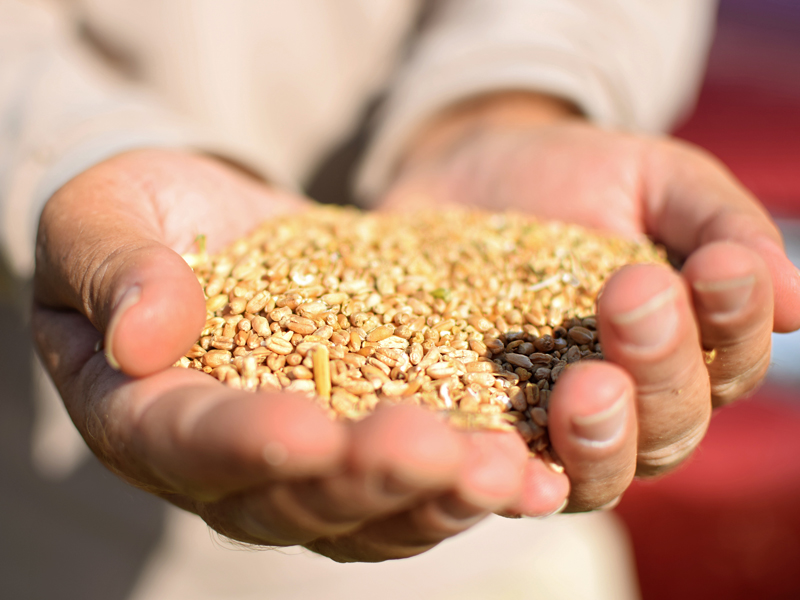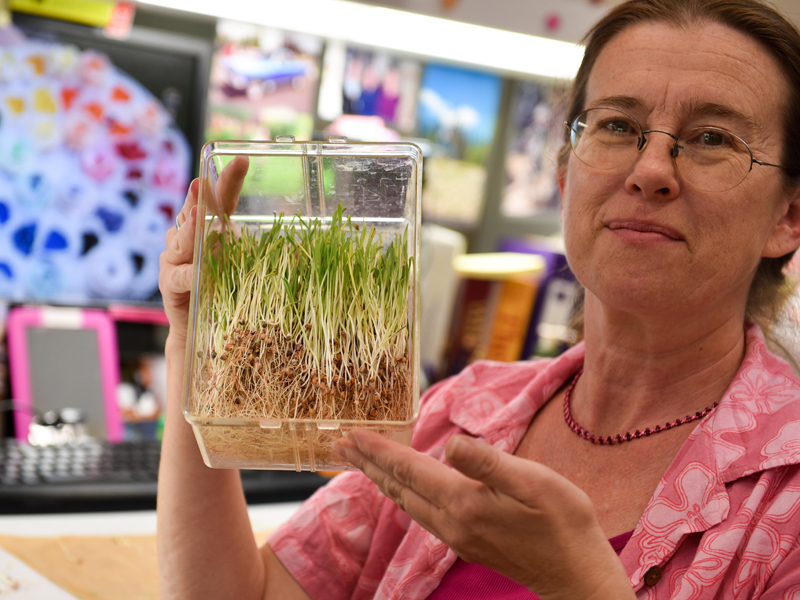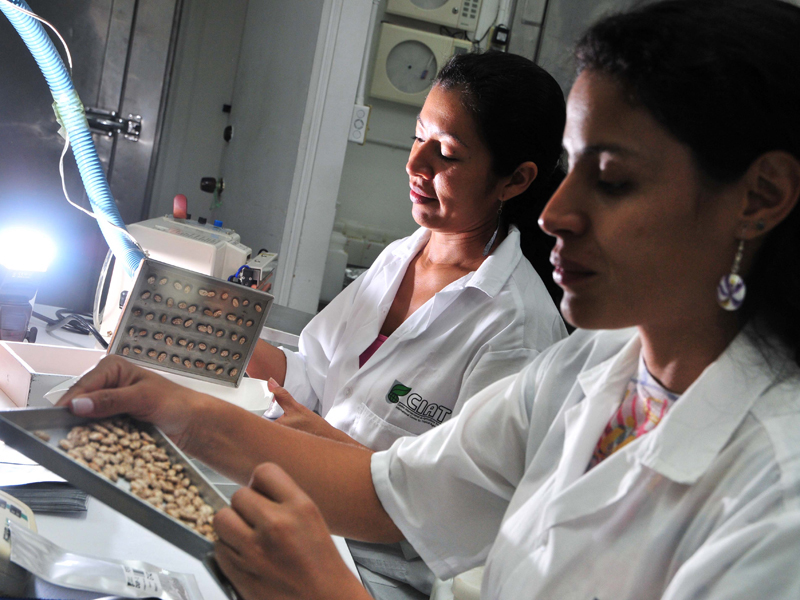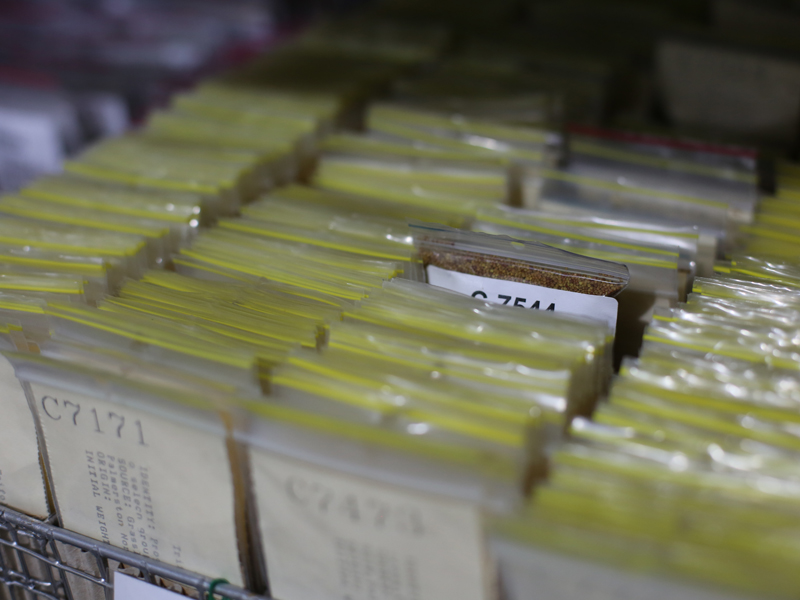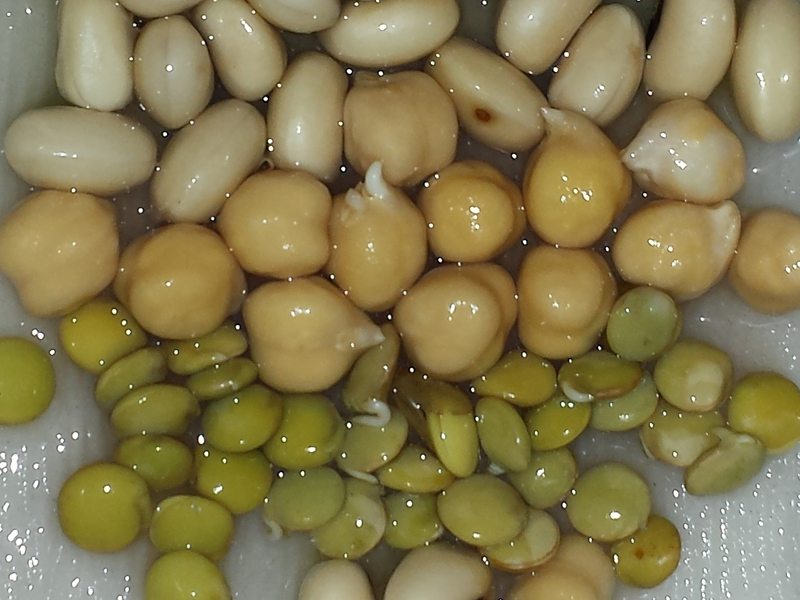What is seed technology?
Seed sciences and technologies process, test, and conserve food and agricultural seeds. The goal is to improve the quality of the seeds that farmers plant, and the food plants that people and livestock eat. Seeds are so important to the Crop Science Society of America that we celebrate them for an entire week! Learn more about Seed Week here.
How does this affect me?
When you hold a seed in your hand, no matter how small it is, you are holding a future plant! The plant’s blueprint is encapsulated, waiting for moisture and nutrients to press the “go” button. Seeds are amazing.
Seeds make up over 70% of the food that people consume directly. From the wheat in our bread to the oats in our cereal, from corn and rice to beans and peas, seeds nourish humankind. Seeds are also planted to produce the rest of the plant foods we eat. From the leaves of lettuce to the fruits of tomatoes, it all starts with a seed. When we eat meat, dairy, and eggs, we also rely on seeds and their products, as livestock are largely fed on corn, soybean, and other seeds. The fibers that clothe us, such as cotton, linen, and hemp, are grown from seeds.
Food and agricultural seeds are developed, processed, and maintained with high quality through continuous advancements in seed sciences and technologies. Some of the steps scientists take to assure a safe seed supply are:
- Sorting
- Drying
- Testing
- Cleaning
- Packaging
- Storing
Continuous advancements in seed sciences and technologies ensure seeds are developed, processed, and maintained with high quality. If a seed supply is not cared for properly, it will lose its ability to sprout, resulting in empty fields. Seed security is food security. (Read more on Plant Preservation here.)
Current challenges
Productive crops and healthy plant foods for people and livestock start with good seeds. Seed producers and processors must provide these high-quality seeds to farmers and consumers every year. This is challenging work, as it requires that seeds be clean and free of weed seeds and other contaminants. Seeds for sale must also be certified for their viability and may be treated in preparation for planting. They need to be checked to make sure they have a good germination rate. (To learn more about factors that affect germination, read here.) Seeds conserved as genetic resources can be used in future plant breeding efforts must be preserved with care so that they are available for decades or longer. These high standards require that seed processing and testing is performed both rapidly and with precision. Seed sciences and technologies support and improve these processes. (Read more about the business of seeds, here.)
Future opportunities
New technologies are being developed to test seeds for contaminants. For seeds that will be shipped internationally, or to U.S. organic markets, high precision testing will help determine the presence of genetically modified organisms. This is a necessary step in the certification of the seeds for shipment.
Seed sciences and technologies are working together with gene banks (more here). Cryopreservation–special freezing techniques–may allow us to save seeds for hundreds to thousands of years. Saving the genetic integrity of seeds is important, as many new advancements come from using older plant seeds. These technologies enable conservation processes to be more efficient. For example, precise viability testing techniques might use just a few seeds versus a large amount. This will save time, money, and seeds!
Definitions
Viability: ability of a seed to grow into a healthy plant
Germination rate: what percent of a seed batch will germinate into healthy plants
How to do a home germination test
Lay about 10 seeds on a wet paper towel. Keep this in an area at room temperature. Look at your seeds on a daily basis, misting if the paper towel gets dry. The germination rate is how many of them sprout: If you have 5 seeds sprout, that is a 5/10 (50%) germination rate. You can transplant the sprouts from this test to soil if you'd like.

